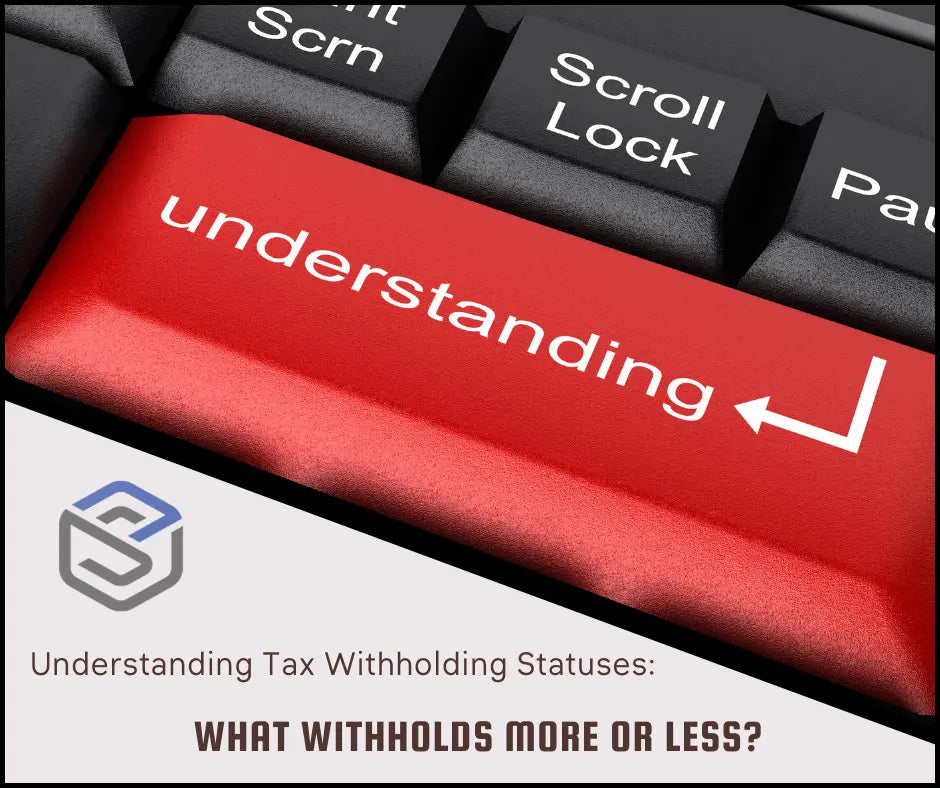
Understanding Federal Tax Withholding Statuses
What Are Federal Tax Withholding Statuses?
Understanding Tax Withholding Statuses - What Withholds More or Less
Starting a new job? You'll probably encounter the W-4 form, or Employee's Withholding Certificate. The information you provide on this form tells your employer how much federal income tax to withhold from your paychecks.
Don’t wait, find the best prices on TurboTax here
The Choices on the W-4: When filling out the W-4, you'll be prompted to select between:
- Single or married filing separately
- Married filing jointly or qualifying widow(er)
- Head of household
Your choice affects how much is withheld from your paycheck each pay period for taxes.
Single vs. Married Withholding:
Single taxpayers can either file as a single filer or, if they support a qualifying person and are unmarried, as head of household. Those grieving the loss of a spouse within the tax year can opt for the qualifying widow(er) status.
Married taxpayers have decisions to make. They can either file together on one tax return or separately on two returns. Generally, a joint tax return tends to yield a smaller tax bill.
Standard Deductions and Tax Rates for 2022 & 2023:
- Single taxpayers and those married but filing separately have a non-taxable income portion of $12,950 for 2022 and $13,850 for 2023.
- Married couples filing together get double: $25,900 in 2022 and $27,700 in 2023.
For tax rates:
- Singles get the lowest 10% rate for the initial $10,275 of their income in 2022 ($11,000 in 2023).
- Married couples filing together are taxed 10% for the first $20,550 of their income in 2022 ($22,000 in 2023).
Thus, married taxpayers filing jointly generally have less withheld than singles.
Best prices on TurboTax here
How Dependents Affect Withholding:
Recent changes to the W-4 form, driven by the Tax Cuts and Jobs Act, removed the personal exemption. Now, instead of estimating withholding allowances, taxpayers with incomes below $400,000 (jointly) or $200,000 (other statuses) will input specific dollar values based on the number and type of their dependents. This new approach helps employers determine the correct withholding amount.
When Should You Update Your W-4? Change in marital status?
Update your W-4. This ensures that your tax withholding aligns with your current situation. To avoid underpaying or overpaying, you can also use the IRS Tax Withholding Estimator.
Common Questions:
- Can a married person withhold as single? Yes, but it's not always beneficial. Joint returns typically provide bigger tax breaks, but there are exceptions.
- Is "single" the same as "head of household"? No. The latter requires the taxpayer to be unmarried, bear more than half of household expenses, and have a qualifying dependent.
- Do married couples filing jointly receive bigger tax refunds? Usually, yes. However, certain situations, like when one spouse has significant itemizable deductions, might make separate filing more favorable.
Conclusion:
Picking the right withholding status is essential for accurate tax payments. While it may seem daunting, remember: you can always seek advice from your employer or a tax professional. Making the right choice ensures you neither overpay nor underpay your taxes, safeguarding your finances and peace of mind.
Best prices on TurboTax here
When you start a new job, one of the first things you'll need to do is fill out a W-4 form. This form determines how much federal income tax will be withheld from each paycheck. One important part of the form is selecting your withholding status.
There are several different federal tax withholding statuses you can choose from, each with its own set of rules and requirements. In this guide, we'll walk you through each status and explain how they can impact your paycheck. By the end of this article, you'll have a clear understanding of which status is right for you.
Federal Tax Withholding Statuses Explained
How to Determine Your Withholding Status
Conclusion



